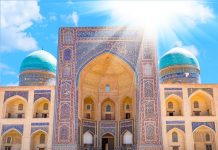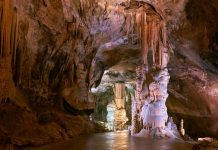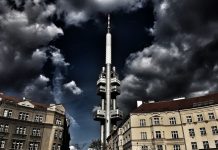With its Old World riches — from traditional village life to Kraków’s medieval market square, from priceless art in ancient castles to the Black Madonna icon in a 14th-century monastery – Poland is everyone’s vacation country.
Points ofInterest
Area: 120,727 square miles (about the size of New Mexico). Population: 37,800,000 (Warsaw, 1,659,400; Lodz, 847,900; Kraków, 740,100). Language: Polish.
Highlights
Warsaw, destroyed during World War II, has been lovingly restored to its original splendor. The city abounds in memorable attractions: Old Town, the Barbican defense walls, the Royal Castle, the Baroque glories of Wilanów and the Ghetto Memorial. At the same time, Warsaw is the exciting center of the country’s economic revitalization.
Kraków, a treasure trove of historical monuments, was long Poland’s capital, and is recognized by UNESCO as a city of World Cultural Heritage. Its history, said to have begun at the end of the 10th century, reached a zenith under Casimir the Great in the 14th century. More recently, in 1977, its spiritual leader, Karol Cardinal Wojtyla, was elected Pope John Paul II.
A tour is an unforgettable step into the past, from Wawel Hill with its palace and coronation chapel, to the grand Market Square ringed by St. Mary’s Church, Cloth Hall and Jagiellonian University, whose illustrious students include the great astronomer Nicolaus Copernicus. Gdansk,Gdynia, and Sopot make up the Tri-City complex.
Everyone today knows of Gdansk, where a series of shipyard strikes in 1980 gave birth to the Solidarity movement led by Lech Walesa, who later became the first president of the new democracy.
Gdansk has been restored to its medieval grandeur after being leveled during World War II. Among the city’s memorable attractions are the Neptune Fountain, Town Hall, the picturesque waterfront and the Solidarity Monument at the Lenin Shipyards.
Gdynia is a very modern Baltic port; while Sopot is an Old World seaside resort of grand hotels and holiday pleasures.
Zakopane, a year-round resort and sports center, is surrounded by the snow-capped Tatras, the high peaks of the Carpathian range. Long a mecca for sportsmen, it attracts hikers, campers and skiers.
The Mazurian Lake District is a favorite vacation area. This complex of 1,000 lakes of Ice Age origin is interconnected by canals. The area also abounds in nature preserves.
Attractions
Old Town and Royal Route, Warsaw. The historical district includes the Old Town Market Square, Renaissance and Baroque houses of wealthy burghers, splendid Gothic churches, and the Royal Castle.
Lazienki Park, Warsaw. A sprawling palace-park complex, an example of Polish classicism from the second half of the 18th century. Historical sites include the Palace-on-the-Water; Theater-on-the-Island; Orange House, and the Chopin Monument, a popular spot for summer recitals.
Palace of Wilanów, Warsaw. Both a museum and a residence for the highest-ranking guests of state. Nearby is the modern pavilion of the Poster Museum, first of its kind in the world.
Market Square, Kraków. Perhaps the largest medieval market square in Europe. Note especially St. Adalbert’s Church (11th century), the Gothic Town Hall Tower (14th century), and the Cloth Hall (14-16th centuries). Nearby is the Church of the Holy Virgin Mary with a late Gothic masterpiece — the altar triptych carved by Wit Stwosz.
Wawel Castle and Cathedral, Kraków. Overlooking the city from a high, rocky hill, the previous royal seat (royalty ended in the 18th century) houses priceless collections, such as the Arras tapestries depicting Bible scenes, royal furniture and period interiors. The Royal Treasure House at Wawel contains coronation regalia and royal jewels.
Czartoryski Museum, Kraków. Ancient art and European paintings, including Leonardo da Vinci’sLady With an Ermine, a powerful portrait equal in greatness to the Mona Lisa.
Jasna Gora, Czestochowa. The 14th-century Pauline monastery holds the nation’s most important shrine — the icon of the Black Madonna. Pilgrims and visitors pay their respects to the magnificent painting, which is unveiled several times a day. Since 1655, when a powerful Swedish army was turned away, many believe that the Black Madonna can be relied upon to defend Poland in dark days.
Main City and Royal Route, Gdansk. The road by which Polish kings entered the port city, including Dluga Street and Dlugi Targ (Long Market). Lines of colorful houses, which once belonged to the wealthy families of Gdansk’s patriciate, have been rebuilt with great care.
Maalbork Castle, Gdansk. Also known as Marienburg, one of Europe’s largest medieval fortresses, it housed more than 700 Teutonic knights who ruled the lower Vistula in the 14th and 15th centuries. With reconstruction near completion, visitors can tour 20-foot walls, moats and towers.












